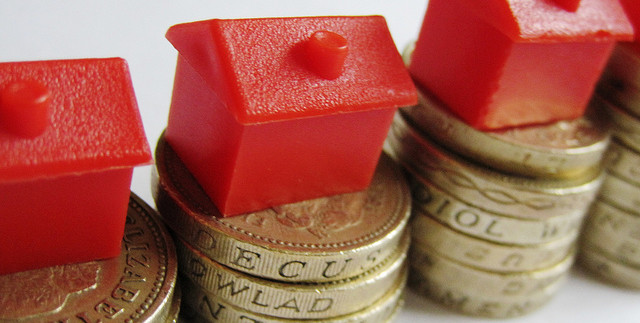MORTGAGES – FIXED RATE VS ADJUSTABLE RATE

When financing to buy a new place, choosing the right type of mortgage will be a vital step of the process. Selecting a mortgage is not only looking for a difference in your future monthly payments, but also calculating the overall cost of your loan and understanding that this is a serious long-term financial commitment. The first step towards choosing what is best for you, is understanding the differences between the two main types of mortgages, Fixed Rate vs Adjustable Rate. Each type has its Pros & Cons, and the best choice will depend on your current financial situation and the level of risk that you will be able to comfortably manage for years to come. Now to the comparisons:
FIXED RATE MORTGAGES
- Most popular type of loan (composing around 75% of all loans).
- Both the interest rate and the amount you owe each month (interest plus principal) remains the same through the entire life of the loan (payment can only increase with changes in your taxes or insurance).
- Usually offered in 10, 15, 20 and 30 year terms, with the 15 and 30 year being the most common.
- Fixed-rate means you are protected from inflation and rises in mortgage rates.
- At the same time, your interest rate will not go down when rates drop (in some cases you could consider Refinancing).
- Because you are protected from rising rates, you pay a premium for this comfort, which is roughly 1 percentage point more when compared to its Adjustable-Rate counterpart.
- Better for risk-averse homebuyers and/or someone who plans to live in the same house for a very long period of time.
- With the 30-year term you’ll have the lowest monthly payment because of the longer loan term, but your interest rate will be higher and you’ll also end up paying more money in interest over time.
- With the 15-year term you’ll have much higher monthly payments as you pay off the entire loan in half the time, but this gives you the advantage of getting a lower interest rate, building equity faster and paying less money in interest over the life of your loan.
ADJUSTABLE RATE MORTGAGES (ARMs)
- In an Adjustable-Rate Mortgage (ARM), the interest rate will change throughout the life of the loan.
- Your interest rate will be determined by the Prime Index Rate, which relies on several financial indexes (each ARM will identify which index it follows). So the interest rate you pay will fluctuate along with changes in the Prime Rate.
- Generally, ARMs will limit both the amount & frequency of changes in the interest rates in order to avoid wild and constant changes in your mortgage payments (there are floor, payment and life caps on the rate).
- When compared to fixed-rate mortgages, ARMs offer lower interest rates and lower monthly payments at first because the borrower is taking the risk of changing interest rates later.
- It is crucial to understand the tradeoff between a more affordable home at first because of lower payments, and the always present risk of significantly higher monthly payments with rising mortgage rates.
- ARMs are better for people who are quite sure that their income will increase over time, or who are planning to sell the property or refinance before the rate adjusts upward. They should feel comfortable with the risks involved and be confident with higher payments in the event that refinancing or selling is not possible.
- It is important to note that many ARMs have a penalty for paying off the loan early.
- ARMs have an initial period during which the interest rate does not change. This period can be as short as 6 months or as long as 10 years.
- The most common Adjustable-Rate Mortgages right now (Oct 2014) are the 3, 5, and 7-year ARMs.
- The numbers 3, 5 and 7 refer to the set period of time (in years) for the introductory interest rate, which will then adjust annually for the remaining time until the note reaches a total of 30 years. So in a 5/1 ARM, your interest rate is set for the first 5 years and will then adjust every year for the remaining 25 years.
Finally, you have seen that each type of mortgage has its advantages and disadvantages. At the end of the day, it all comes down to factors such as the current status of the economy & mortgage rates, your financial situation, your level of risk aversion, and your future goals & expectations. Whatever you choose, make sure you will be able to feel comfortable for years to come.
Adrian Morales Dobrzynski
